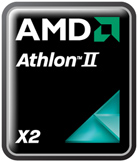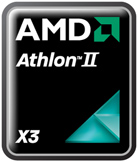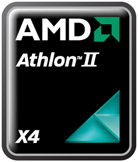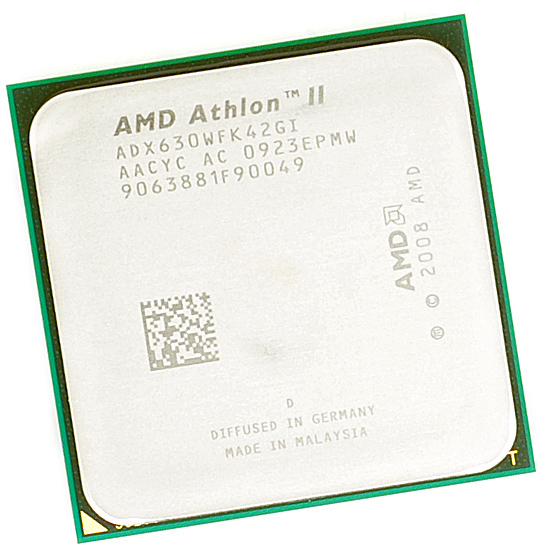AMD Athlon II X4 620 & 630: The First $99 Quad Core CPU
by Anand Lal Shimpi on September 16, 2009 12:00 AM EST- Posted in
- CPUs
Final Words
Regardless of what it may seem like, this is not a repeat of AMD during the late K8 or during the Phenom days. AMD is relegated to competing in the sub-$200 space, it is actually very competitive in that space. These days, I'm sure that's not a bad position to be in. While I'm sure AMD would love to be able to demand more money for its processors, being able to demand any at all isn't a bad position to be in.



The Athlon II X4 620: Doing the Athlon Brand Justice
AMD effectively knocked 40% off the value of Intel's low end quad-core CPUs. The Athlon II X4 620 manages to, at $99, perform close enough to the Core 2 Quad Q8200 that the latter simply doesn't make any sense. Add another hundred dollars and you'll get a Core i5 750 (or less will get you into a Phenom II X4 945/955), but if you're on a strict budget you can't beat the 620.
The 630 I'm less excited about simply because it commands a 22% price premium. What the 620 has going for it is its sub-$100 entry price; start going much above that then you might as well be looking at a Phenom II X3.

In the Phenom generation AMD fought off Intel's dual cores with its own triple cores. This time AMD is fighting off Intel's dual cores with quad cores. It's clever positioning and aggressive pricing that AMD will have to employ in order to make it until Bulldozer and Fusion hit.










150 Comments
View All Comments
Exar3342 - Wednesday, September 16, 2009 - link
$50 is pretty trvial in the overall cost of the computer. Even a relatively cheap system with a O/S and a acceptable graphics card would be $400-500. This difference is only ~%10 of the overall cost, and yields a performance increase of 20-40% and is more efficient.You are thinking small, think bigger.
With the Athlon X4 at $100 and the i5/i7 at $150-250, there is really no reason for anyone to buy a brand-new PhII system at all. If you want cheap, get the Athlon X$; if you want fast, get the i5/i7.
Patrick Wolf - Wednesday, September 16, 2009 - link
"With the Athlon X4 at $100 and the i5/i7 at $150-250, there is really no reason for anyone to buy a brand-new PhII system at all."You are thinking big, think smarter. And the i5 is $200, not $150.
The price per performance scales linearly. An Athlon X4 w/ mobo and DDR2 < PhenomII X4 w/ mobo and DDR2 < i5/i7 w/ mobo and DDR3.
You get what you pay for.
And less we forget, DDR3 isn't exactly cheap yet. And the new 1156 boards are starting at ~$100.
lopri - Wednesday, September 16, 2009 - link
To all those who worry about AMD's finance: Why do you care?It has been a great mystery to me throughout many years. Sure I understand the need for competition which benefits everyone in a free market, but there are other things that can ensure fair competition. Worrying about a corporation's profit margin is not the first on the list. I'd leave that to the management and shareholders.
Smidge - Thursday, September 17, 2009 - link
Competition is important, both for driving prices down, and driving development. As I recall, Intel started their whole tick-tock releases of architectures in response to starting to lose the lead in the processor market. As well as that they were reportedly sitting on a bunch of tech advances until they'd sold enough of their previous gen stuff. The cost savings are especially obvious when you think of how prices tend get slashed whenever the competition releases a new product, especially if it outperforms products in a higher price bracket.Now remember that AMD are the only real competition in both the CPU (x86_64) and graphics markets for Intel and Nvidia respectively. Both markets have an extremely high barrier to entry. Well, with the requirement of probably billions in startup investment and decades of processor research, it's more like a nigh-impenetrable barrier to entry. So if AMD were to go under, Intel and Nvidia would both have monopolies in their respective markets for a long time to come.
I think it's perfectly fair to worry about AMD's finances given how much it would suck for us consumers if they were to go under (as they were close to doing before the globalfoundries spinoff). As I would worry if Intel or Nvidia were struggling. Though Intel seem to be sitting on a boatload of cash so that's not much of an issue.
BSMonitor - Wednesday, September 16, 2009 - link
Just noticed on the benchies that the Athlon II at 2.8GHz was pretty close to the Phenom II at 3.2GHz... If you compared the two at the same clock, what does the 6MB L3 get one across the board?? In a lot of cases, seemed to be very little. Just one of those charts with percentages side by side would be cool!strikeback03 - Wednesday, September 16, 2009 - link
That chart is in the middle of the first page - a breakdown of the SysMark results at 2.8GHz.BSMonitor - Wednesday, September 16, 2009 - link
Right, that's just SysMark.. Sometimes he has a chart from top to bottom with all the benchmarks..fitten - Wednesday, September 16, 2009 - link
In the Cinebench R10 section:"the Q8200 is the slowest chip here." when it is clearly in the middle of the pack. I think it should be "the Q8200 is the slowest quad core chip here."
fitten - Wednesday, September 16, 2009 - link
My bad... that is talking about the single-threaded performance, not the multithreaded performance.DrMrLordX - Wednesday, September 16, 2009 - link
I'm curious about the NB overclocking on these chips. Few have been able to achieve stable NB speeds over about 2.6 ghz on Phenom IIs. How far could you push the NB on your 630? Or 620, for that matter?